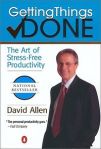It worked well. Until it didn’t. ..
In the first ten years of this century – a period of truly staggering underachievement in business, technology, and social progress – we’ve discovered that this sturdy, old operating system doesn’t work nearly as well. It crashes – often and unpredictably… It is proving incompatible with many aspects of contemporary business. Modest updates – a patch here and there – will not solve the problem.
What we need is a full-scale upgrade.
(and, that upgrade is toward work motivated more and more by “intrinsic motivation”):
“Intrinsic motivation is of great importance for all economic activities. It is inconceivable that people are motivated solely or even mainly by external incentives.” (Bruno Frey)
Enjoyment-based intrinsic motivation, namely how creative a person feels when working on the project, is the strongest and most persuasive driver.
Daniel Pink, Drive: The Surprising Truth about What Motivates Usself–start·er noun
• a person who is able to work without needing a lot of instruction or help
• a person who has initiative
——————-
I revisited Drive by Daniel Pink this week. And it reminded me of other books that I’ve read in recent years: Getting Things Done by David Allen, and Focus by Daniel Goleman, among others. A theme has developed. Here it is:
More and more and more work is dependent on self-direction.
Even though I wrote just yesterday about the role of a good manager/coach, in reality, work is increasingly self-directed. And, since it is so self-directed, it relies on:
Self-learning
Self-initiative
Self-motivation
Self-discipline
Self-correction
Self-starting
We all know that a person who is a self-starter, who can see the next thing and tackle the next thing without hesitation or without some outside “push,” gets more done, adds more value…
Part of this is due to the ever changing nature of work. Practically nobody in those high-rise and low-rise office buildings, or in those home offices, are doing the equivalent of assembly-line work. They have to “figure out the next thing to do” more and more on their own. And, then, after figuring it out, they have to then get to it.
For some, this is so very difficult. Some people may really need a “taskmaster” hovering over them, saying “do this now; do this next.” But those jobs are not what many of us experience.
Or, to put it another way, if you need a task-master hovering over you, you’d better learn how to become your own taskmaster.
And, whether you are self-employed, or working within an organization, more and more of your own time is not precisely determined minute-by-minute. You have to decide what to do next; you truly are in charge of your own “what to do next.”
And if you are not self-disciplined, a true self-starter, with great self-correcting skills, you will fall further and further behind.
So, since you probably do not have a taskmaster hovering over you, become your own taskmaster, and get started. Now…
——————–
One hint/tip you might want to try:
My work weeks are plenty “ordered.” I have new books to read, new presentations to prepare, speaking to do, appointments to keep. But, just recently, I bought one of those nice, relatively substantial, good size blank books, and I have a page in it – that I check very regularly. It has my list of “next projects to tackle” listed. It is in a close-to-my-desk drawer, and nothing sits on top of it. I open the drawer, pull out the book, and open the page, and see what’s next. It is becoming a very valuable tool.
 Remember, from David Allen: if you do not know what your next “what’s next” is, you’ve got some planning and organizing to do.
Remember, from David Allen: if you do not know what your next “what’s next” is, you’ve got some planning and organizing to do.
